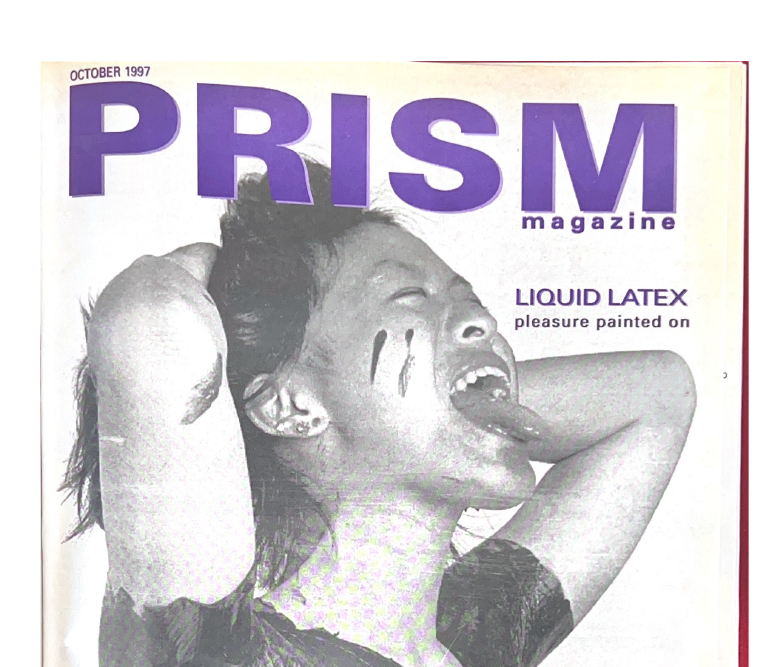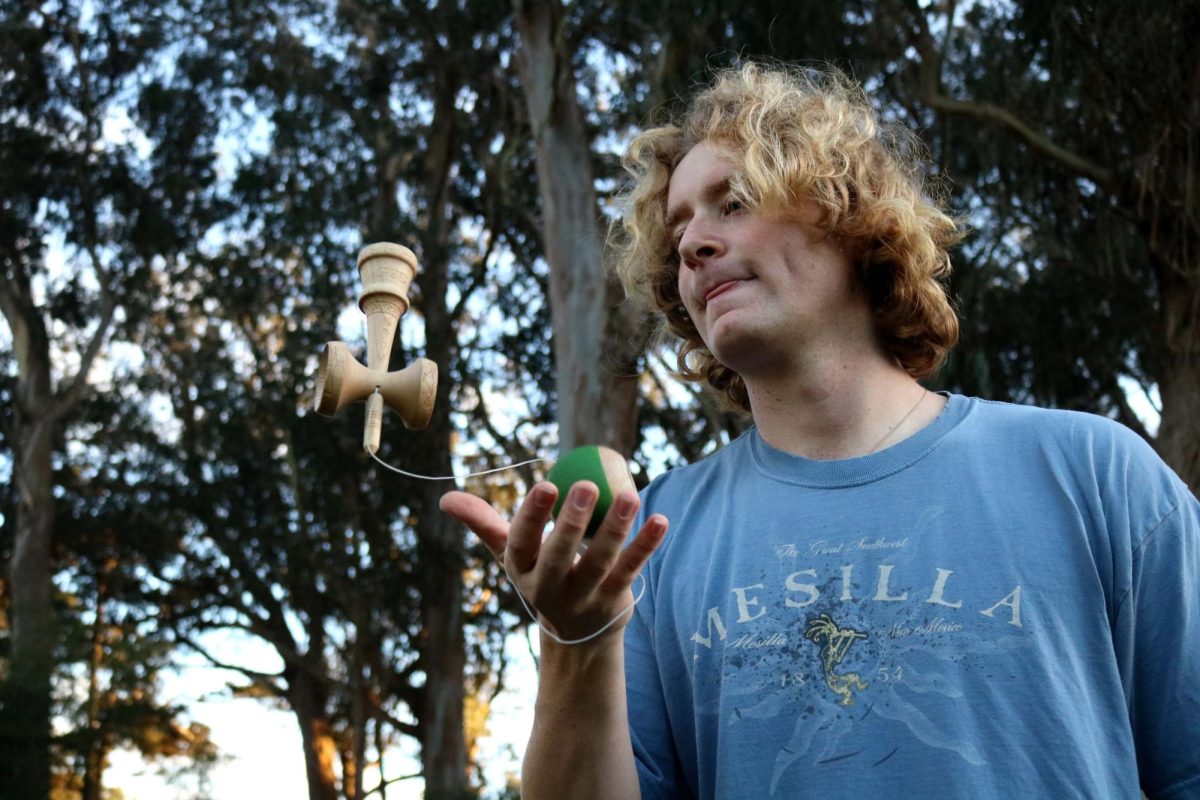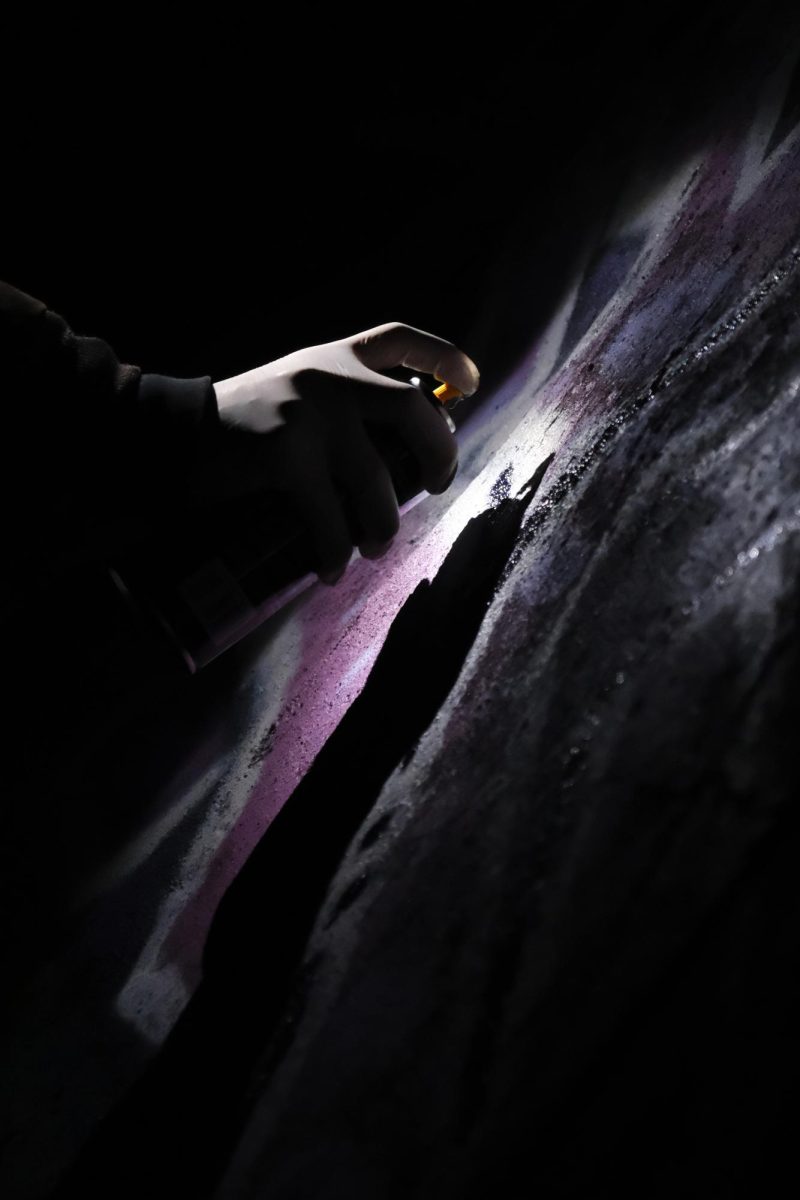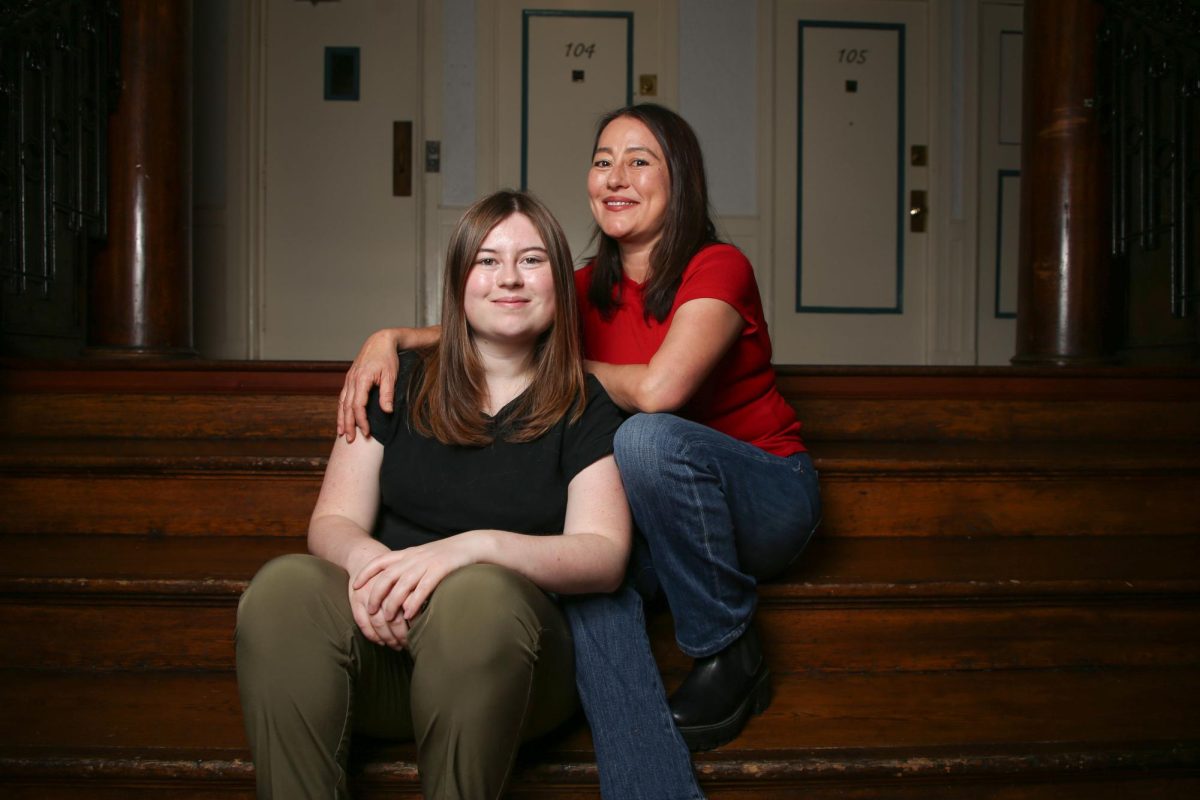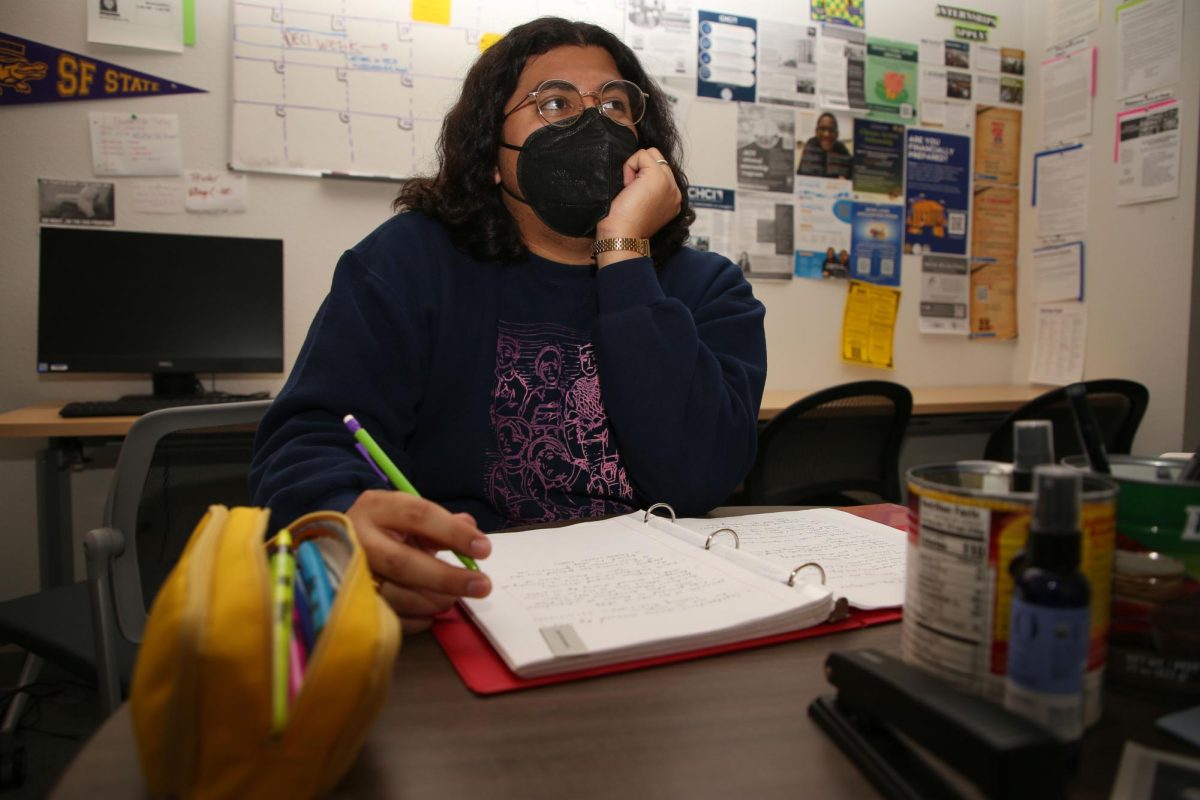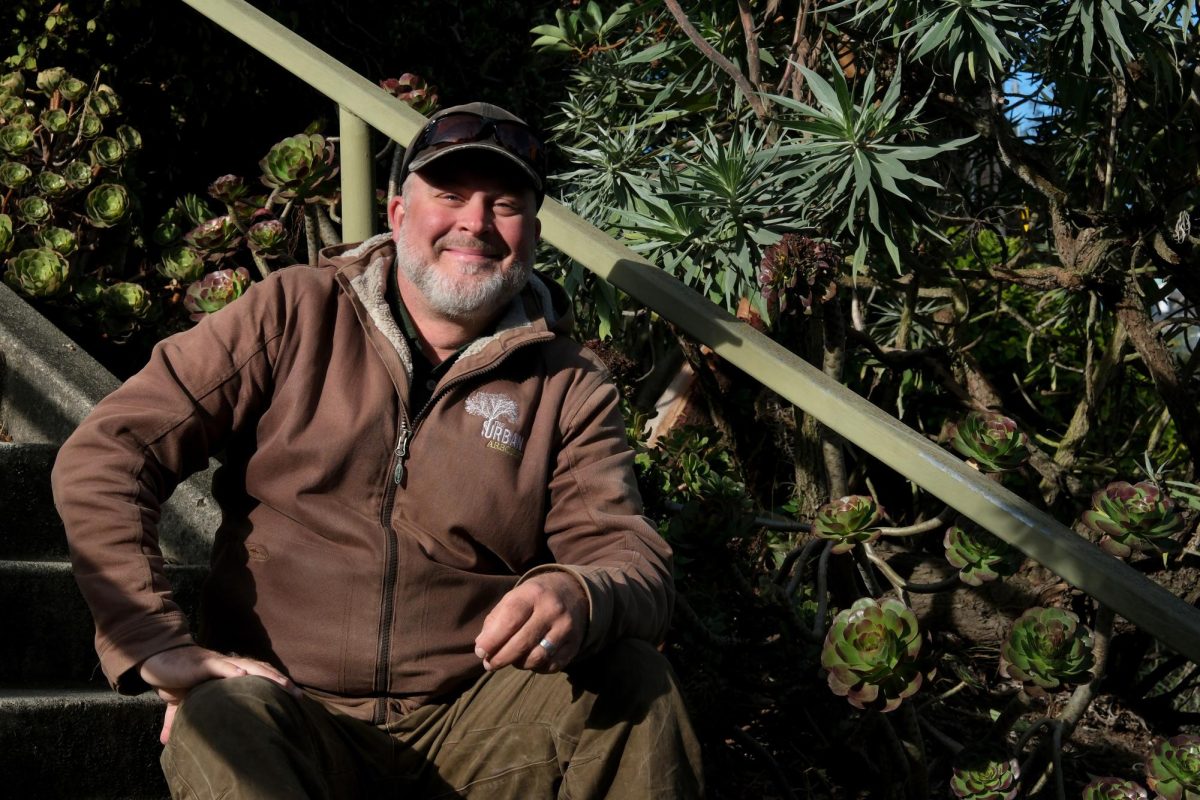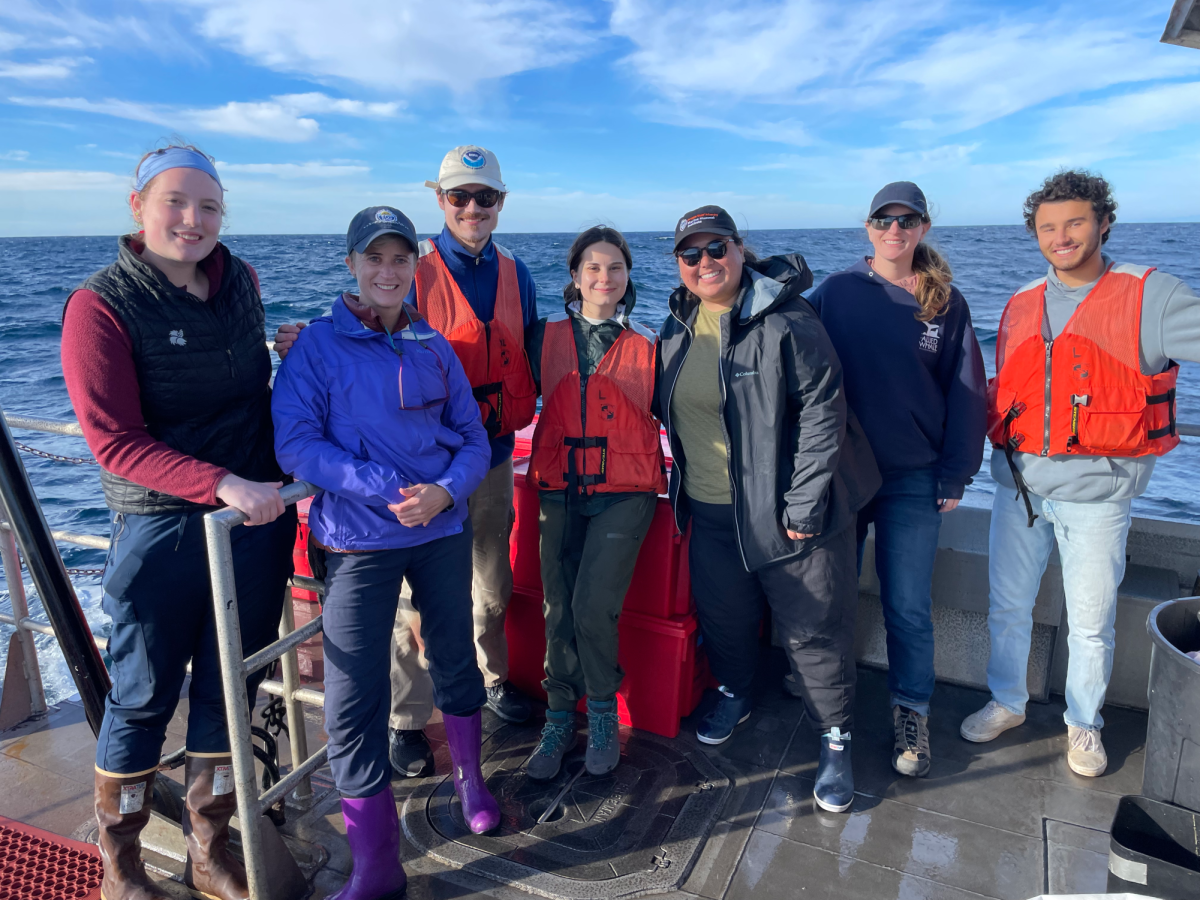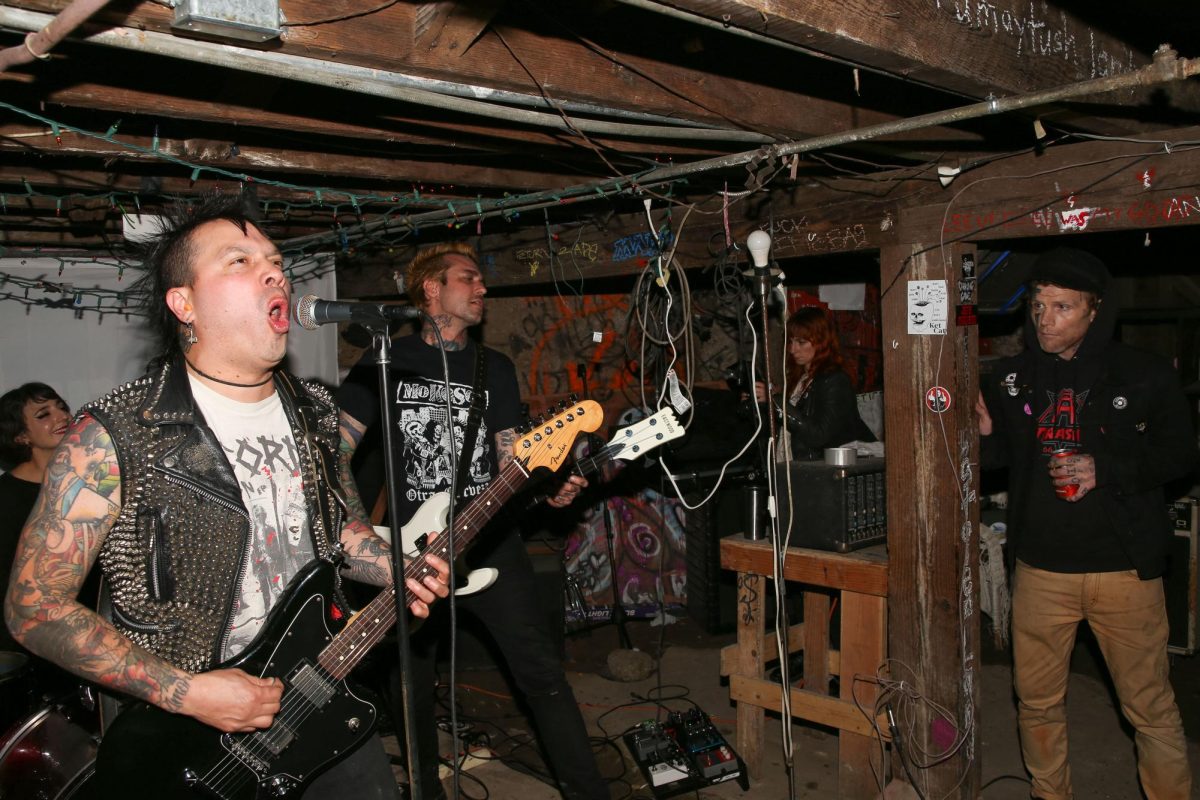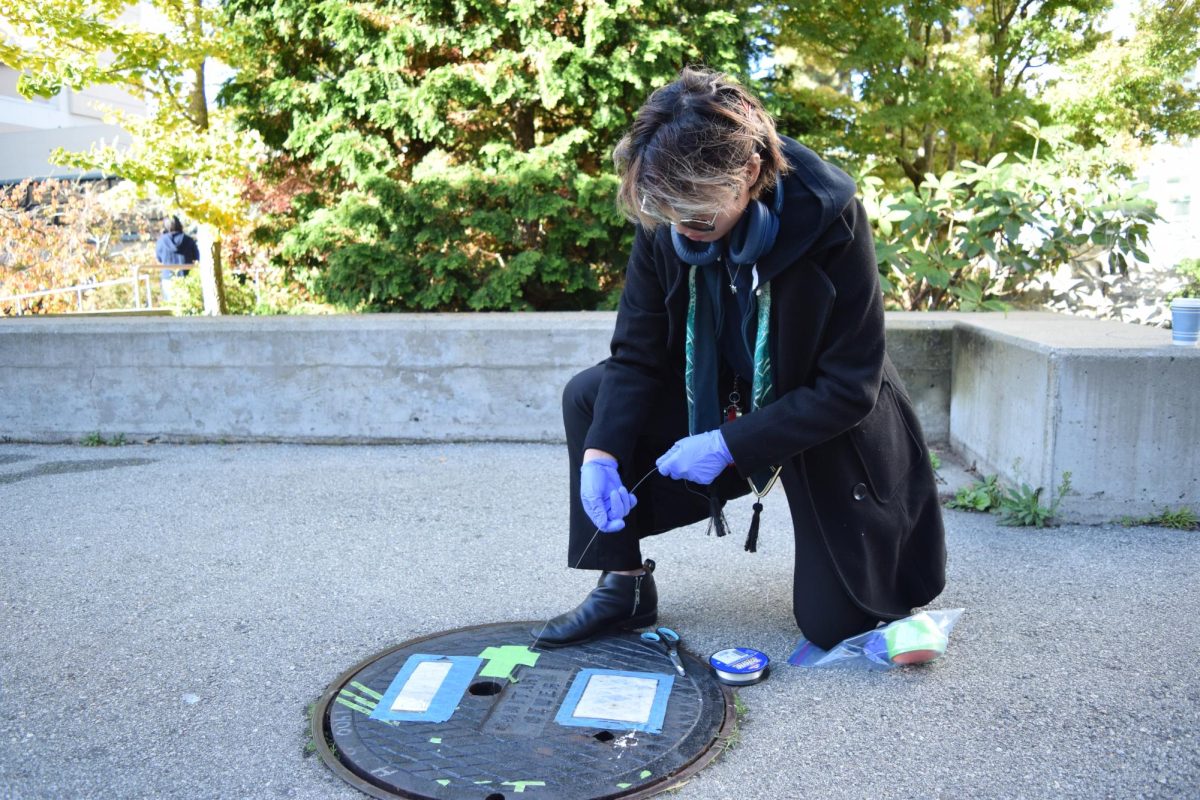
During the Iron Age, blacksmiths rapidly moved up the ranks of society due to their important role in village survival. They worked with the fire from a two thousand degree forge to pound iron into working tools needed for a thriving village. Three thousand five hundred years later, the blacksmithing technique remains unaltered. With just fire and a hammer, you can create anything from a tiny delicate ring to an im- mense iron gate and just about everything in between.
The first thing you notice when you enter the studio tucked in the far back corner at the Crucible, an industrial arts center in West Oakland, is that it is loud. It is impossible to talk to the person standing next to you due to the constant buzz of the flaming furnace that echoes across the room. The hammer’s heavy impact with metal vibrates through the air, ringing in your ears. Three forges emit blazing heat with fire so bright that it is almost blinding. Large fans blow at the entranceway in an attempt to cool down the room’s rising temperature that approaches one hundred degrees.
Sweat drips down the face of the only female blacksmith in the room as she rhythmically strikes away at the red-hot steel she holds against the anvil. She is short in stature, with a wavy, grown-out pixie cut. Her petite frame is dressed in heavy work boots, jeans, and an oversized red shirt that reads ‘“fire safety” across the back. Her eyes peer through large safety goggles and her hands are engulfed by a pair of heavy-duty gloves. With each blow from her hammer, hot embers fly in every direction with the ability to burn through anything that crosses their path. This space is better known as “the Smithy” to the artists and students that come here to craft, create, and collaborate.
Here at the Crucible’s Fall Open House, the space is packed with people of all ages peeking into various studios where artists are demonstrating their craft. The event is an open invitation for curious onlookers to step into the massive warehouse and experience the industrial art classes offered. Past the glass blowers, a sultry fire-eater is on stage as the audience stands in awe. The smell of bacon is intoxicating as it sizzles in a handmade cast iron skillet in the middle of the warehouse.
In the Smithy, Marielle Hsu demonstrates the forging of a spoon. It starts off as a flat, sliver steel rod, and after a couple minutes in the forge, tongs are used to retrieve the bar on fire. Bearing a pulsating orange tip, she places the piece of steel directly perpendicular to the anvil. She quickly pounds the metal with a purpose, altering its shape, causing it to bend. In less than two minutes the metal is too cool to work with and is placed back into the fiery inferno.
Taught in Blacksmithing I, spoons are created with a technique called “upsetting,” where the metal is made thicker on one end by shortening the opposite end. The result
is a massive thick black spoon not typically seen in a kitchen dishware set, and will most likely end up as a paperweight.
“I think the biggest eye opener is how much heat a piece of metal will hold, even when it looks cool,” Hsu says about the dangers of blacksmithing. The metal can reach up to about two thousand seven hundred degrees before it even begins to melt. Blacksmiths take extra precautions when it comes to fire safety due to iron’s ability to retain heat even after it loses its red-hot shade. With protective eye-gear and heavy-duty gloves, Hsu uses tongs to carry the piece of hot iron around the studio.
“Instinct is to move things with your hands and it takes a lot of remembering to practice using the tongs,” Hsu explains.
Hsu grew up around her parents’ jewelry studio, where they worked with cold metal. Occasionally, they would visit their blacksmith friend, Glen Horr, who made tools for metalsmiths. Hsu remembers visiting the studio inside a huge open farm in Berkeley Springs, West Virginia as a child. Her interest in blacksmithing sprung due to her attraction to the open forge.
“It was so different from the other art experiences that I’d had,” says Hsu. “It was dirty in a different way than painting, and painting can be really messy.” She still contacts Horr when she is having trouble with a technique. “Many skills are really difficult to teach; they involve a lot of muscle memory,” she says.
When Hsu moved to San Francisco seven years ago, she began looking for an interesting place to volunteer. When she walked into the Crucible, she knew she had found where she wanted to be. She spent her childhood around artists, so the place felt like a piece of home. She began volunteering in the office and eventually a spot opened up in the fire safety department, which she thought sounded cool. Hsu was able to trade her volunteer points for blacksmithing classes at the Crucible, where she learned various techniques.
Smaller and less confident than the burly bearded men usually associated with blacksmithing, Hsu first enrolled in a one-weekend women’s workshop, where she was able to gain confidence in the art. By enrolling in the women’s class, she was surrounded by women who were there to learn, instead of men who typically came to show off. There, she was able to submerge in an environment where it was okay to be unsure of herself. She compares this experience to her co-ed Blacksmithing II class where “elements of machismo” were clearly present.
“These guys had heavy hammers, five to six pounds and I’m over here with my two to three pound hammer,” she says about the innate sense of competition. “It’s a very different atmosphere to be in a class with twenty-something-year-old guys figuring out where they stand within the social continuum.”

Although female blacksmiths date back to the Iron Age, they are less frequently talked about, and not typically associated with the trade. In 1882, Hattie Graham became Sudbury, Massachusetts’ first female blacksmith against protests from men and women alike. She went on to advocate the right for women to vote and hold office along with the town’s male citizens. Today, the role of a blacksmith is still male-dominated, but women in the industrial arts are changing that.
Carla Hall, an instructor at the Crucible, created the Woman’s Blacksmithing class along with another female welder. The class was created to adhere to the demands of female students who wanted an environment that was more encouraging and less competitive than the co-ed classes. Their goal was to teach in an environment that was more welcoming for the woman interested in the industrial art classes. She recalls her own prejudices faced as a woman in an industry where her male counterparts lacked the be- lief that she was skilled to do physical labor.
Hall got involved at the Crucible during its founding years in 2000, and was drawn in by their philosophy to create an accessible community for the arts. Her involvement with blacksmithing developed from her attraction to fire and the ability to use it as an artistic tool.
Growing up in the humid climate of North Carolina, she developed a need for heat. Her first experience manipulating metal came in college where she observed its raw process. She was captivated by the organic textures created through blacksmithing, and knew she had found her passion. Hall’s business, Carla Hall Metal Design, revolves around a contemporary smith model where she merges skills including cold working, welding, woodworking, and cast iron.
Hall’s unique style is highly influenced by Japanese folk culture’s simple structure. Occasionally, she steps out of this realm to create out-of-this-world architectural objects. Her latest project is a whimsical, mechanical bird gate created for a resident in Napa. The project merged various mediums including blacksmithing, welding, cast iron, and redwood. It was designed in a steampunk fashion to reflect the client’s appreciation for bones and bugs.
Appearing as if it was pulled off the set of Tim Burton’s “Nightmare Before Christmas,” the gate takes the shape of a skeletal bird wing with bird skulls forming the door pulls. Gears big and small, textured metal, and redwood lumber from the world’s tallest trees are some of the unique elements incorporated in the gate. The massive two- panel driveway gate took four months to construct with the collaboration from three assistants. Mackenzie O’Brien, who served as an assistant on the gate project, says about Hall, “She’s a very talented metal worker and I learned a lot from her over the past year.”
O’Brien’s story begins at her kitchen table, when she first tried incorporating heat in jewelry making. “I sat there trying to heat a piece of metal with a lighter and then I thought, ‘this isn’t working. I need to learn how to blacksmith.’”
In North Carolina, she enrolled in a folk school where she exchanged work on the farm for blacksmithing classes. She then applied for an internship on a farm in Wis- consin. “I was in Amish territory; resources were more traditional and people didn’t have access to electricity,” says O’Brien.
She was intrigued by the chemistry behind the changing molecular structure of the steel contracting and expanding upon modification in temperature. That is when she really started to fall in love with blacksmithing. “It blew my mind, I was becoming obsessed with it.”
Her passion for the art was able to fuel her drive despite stereotypes in blacksmithing. Hephaestus, the Greek god of blacksmiths and craftsmen, is portrayed as a strong white man, an image that is difficult to shatter. She remembers walking into shops, fearing people would not take her seriously. “It’s important to show people there is something beyond that stereotype.”
It is not glamorous – it is hard; you get hot and dirty. But blacksmithing is not all about strength; it is about hammer control. “If you’re efficient and detailed, you can do things in less time and don’t have to wear your body out,” says O’Brien.
O’Brien has been a part of a wave of women who are involved in and teach in the industrial arts. She was the first woman ever to teach machine shop at Laney College in Oakland. For the past year, she has been a blacksmithing instructor at the Crucible. “We’re trying to change the historical demographic,” says O’Brien. “The Crucible seems really ahead of its time.”
Back at the Smithy, Hsu’s spoon changes colors as she continues to work. It fades from gray to orange to yellow and back to gray again. Hot ash begins to gather at her feet, resembling the freshly fallen snow during the winter months in her hometown. She hopes to go back this Christmas to spend time at the forge where it all began.
HOW TO GET INVOLVED IN THE ART OF SMITHING
The Crucible Arts Education Center
1260 7th St.Oakland, CA 94607
Three-Hour Blacksmithing Taster
Saturday December 6 & 7
$135
The Pilgrim Soul Forge
450 West Atlantic Ave. Alameda, CA 94501
Basic Intermediate Blacksmithing
Flexible Scheduling for 15-hour course
$375



![[From left to right] Joseph Escobedo, Mariana Del Toro, Oliver Elias Tinoco and Rogelio Cruz, Latinx Queer Club officers, introduce themselves to members in the meeting room on the second floor of the Cesar Chavez Student Center.](https://xpressmagazine.org/wp-content/uploads/2024/03/mag_theirown_DH_014-1200x800.jpg)
